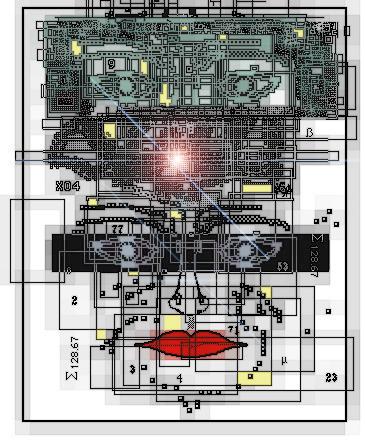
New working paper. Title above, abstract, contents, and introduction below. Download at:
- Academia: https://www.academia.edu/75749826/To_Model_the_Mind_Speculative_Engineering_as_Philosophy
- SSRN: https://ssrn.com/abstract=4078246
- Research Gate: https://www.researchgate.net/publication/359816337_A_Working_Paper_To_Model_the_Mind_Speculative_Engineering_as_Philosophy/stats
Abstract: Are brains computers? Some say yes, some say no. Does it matter? Ideas about computing have certainly proven fruitful in understanding how brains give rise to minds. That’s what this paper is about. The central section is a review of Grace Lindsey’s wonderful book Models of the Mind: How Physics, Engineering, and Mathematics Have Shaped Our Understanding of the Brain (2021). I precede it with a bit of philosophy and follow it with brief notices about five books, each proposing computationally inspired models of the mind.
Contents
Introduction: Brains, machines, and computation 2
Speculative Engineering as Philosophy 4
To Understand the Mind We Must Build One, A Review of Models of the Mind – Bye Bye René, Hello Giambattista 9
Five Good Books 15
Introduction: Brains, machines, and computation
I remember when electronic digital computers were sometimes called electronic brains. The following graph from Google Ngram shows the rise and fall of the terms “electronic brain” and “electric brains.”

Why the quick rise and fall? I’d guess that’s when these remarkable machines first gained public attention. It wasn’t clear what kind of beast they were. How do we refer to them? For a while, we tried out the idea that they were a kind of brain. After all, they did the kinds of things that brains did. They tabulated, sorted, and calculated.
But they also inspired. During the interval of that peak the study of artificial intelligence was inaugurated at a conference at Dartmouth in 1956. Machine translation, the use of a computer to translate text from one language to another arose in the 1950s and then collapsed, alas, in the mid-1960s for lack of practical results. Noam Chomsky conceived of grammar in computational terms. Warren McCulloch and Walter Pitts conceived of neurons as tiny logic engines in the early 1940s and computational ideas began taking hold in neuroscience and philosophy.
Are brains computers? Some say yes, some say no. Does it matter? For ideas about computing have certainly proven fruitful in understanding how brains give rise to minds. That’s what this paper is about. The central section is a review of Grace Lindsey’s wonderful book Models of the Mind: How Physics, Engineering, and Mathematics Have Shaped Our Understanding of the Brain (2021). I precede it with a bit of philosophy and follow it with brief notices about five books, each proposing computationally inspired models of the mind.
* * * * *
Speculative Engineering as Philosophy: Engineering is about how things are designed and constructed. I am interested in how the brain works, how it constructs a mind. When we theorize about that, thinking about models, experiments, or simulations, we are speculating about the engineering principles on which the brain operates. I argue that that is a form of philosophy, in the broadest sense of the term, though not necessarily as philosophy exists as an academic discipline.
To Understand the Mind We Must Build One, A Review of Models of the Mind – Bye Bye René, Hello Giambattista: Descartes believed that truth is verified through observation. Vico had a different view, believing that “What is true is precisely what is made.” Grace Lindsey ‘s Models of the Mind is Viconian in spirit. Its subtitle tells the story: How Physics, Engineering, and Mathematics Have Shaped Our Understanding of the Brain. Lindsey traces the history of the of a wide variety of models and techniques, often back into the 19th and even 18th centuries, in a simple and direct way. I turn my review on a few cases: 1) the 1943 McCulloch and Pitts model of neurons as logical operators, 2) Frank Rosenblatt’s Perceptron from the late 1950s, and 3) Jerome Lettvin’s 1959 work on the frog’s visual system, which Nicholas Humphrey parlayed in a 1970 article on the monkey’s visual system. That last brings in an evolutionary angle. The whole thing is wrapped up by Joyce’s Finnegans Wake, and its Latin translation.
Five Good Books: Short notices for five books, each about the mind and/or brain, each in a different style: 1) John von Neumann (1958), The Computer and the Brain, 2) Herbert A. Simon (1981), The Sciences of the Artificial, 3) William Powers (1973), Behavior: The Control of Perception, 4) David G. Hays (1981), Cognitive Structures, and 5) Valentine Braitenberg (1999), Vehicles: Experiments in Synthetic Psychology.

